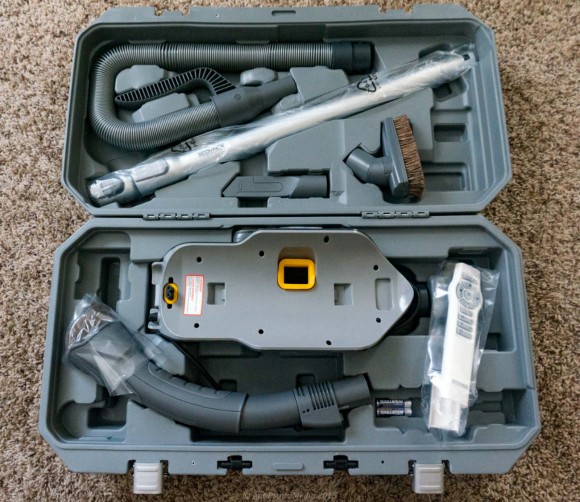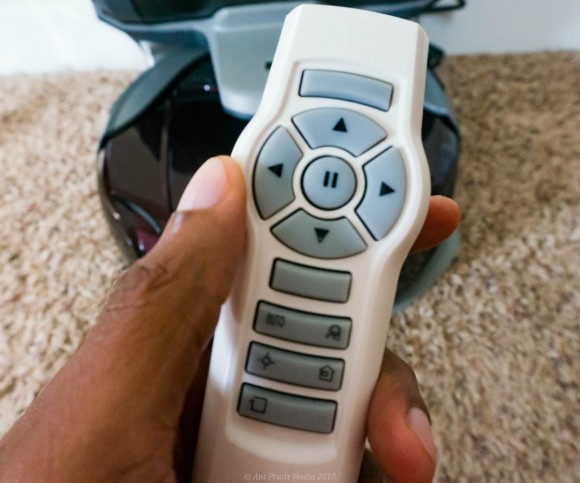aNewDomain — Remember when I showed a vacuum robot sweeping the smallest bathroom you’d ever seen? The robot used in that demo was the Ecovacs D35. The cute compact vacuum robot was clever, but I didn’t think it was the most efficient way to sweep your home floors. The tech was cool, but I found an ol’ school broom to be more efficient. Despite my review, Ecovacs kindly shipped the Deebot D79 for review. This, my friends, was a fun review. Let me share my thoughts on this product.
Deebot D79
I was somewhat skeptical when Ecovacs sent me another item to review. You folks know I love tech, but I also enjoy simplicity, so I was apprehensive at the thought of another Ecovacs review. Fortunately, I’m a sensible man that believes in second chances. This was a much better experience.
The Deebot D79 arrived in a box much larger than I expected. Almost four times as large a box as its D35 counterpart. I was baffled as I assumed the robot would be a very large vacuum. I was wrong. The box included the standard size Deebot, measuring at roughly 12 inches in diameter.
Why was the box so big, Ant?
The box included the D79, as well as a charging base, carrying case and additional attachments for handheld vacuuming tasks. This was impressive. The benefit of a typical upright vacuum is the reliability and attachments for other vacuum tasks. Ecovacs offered the same convenience. The handheld vacuum included a hose, remote, extra nozzles and a power-cord attachment all in a portable case.

I was exited to get my hands on these accessories, but I also wanted to see just how well the D79 would perform in general. After moving into my new “palatial” estate, I popped the D79 together within five minutes. I gave the lil’ ‘bot a charge and pushed it through a full sprint. The vacuum is designed to handle carpet and hard-surfaced floors. This allowed for it to roam my living area and kitchen effortlessly in a Deebot typical inspection pattern, using its debris and obstacle sensors.
My complaint with the first Deebot I reviewed was the amount of time it took to do a small job. I read up on this timing and found it to be typical of most robotic vacuums. The D79 took anywhere between 45-55 minutes to complete the cycle, but it was worth the wait. The device REALLY picked up debris. Here is my list of pros and cons. I’ll start with cons.
Cons
Obstacle detection is pretty good, but not perfect. The low profile of the D79 allows it to vacuum under furniture easily. I advise you not to allow it to vacuum under your dining-table chairs. I’ve found that the D79 struggles with vacuuming under and around chair legs. This may be due to spacing and the sensors’ algorithm crashes when trying to calculate distance and clearance. In my test, I put a dinner-table chair in the middle of the floor. The D79 would go under the chair, but not make its way back out even with ample clearance. The solution was to put my dinner chairs on top of the table. If the obstacle clearance is an issue, this makes the automatic scheduled cleaning option moot.
Cleaning corners for a circular robot continues to be a challenge. The D79 comes with two sweepers along its edge to aide in sweeping baseboard areas and corners. This doesn’t clean corners at 100%, but it does a good job in general.
The remote is average at best. A few buttons on the remote are totally useless. They’re not labeled. Why have those buttons at all? I didn’t always get a response from the remote, even when using clear line of site for the RF. The few times I found the remote useful was when the D79 was stuck under an obstacle (the dinner chairs). The remote allows you to move the robot around obstacles the same way you would control a toy car.

Pros
This vacuum sucks! I mean this in a good way. The D79 did a great job of cleaning up my flooring. The family dog sheds fur regularly, but the robot picks up the mess quite easily. Even the fur you don’t see.
Staircase awareness is pretty spectacular. I watched the robot to see if it would fall down my staircase while on assignment, but it safely avoided the stairs each time I tested.
Power efficiency is pretty impressive. The robot’s debris sensors tend to know when it’s been over a specific area a few times and shuts off suction. I’ve watched and listened for the suction a few times. The D79 will go along a path with suction at full blast but eventually stop running suction after it doesn’t sense debris. This leads to longer battery performance. Not only is it efficient, but it’s relatively quiet. Don’t get me wrong, you can hear it, but it’s not as disturbing as a typical upright vacuum.
Clean up is magical! Upon completing its task, the robot finds its way back to the charging station. When it successfully connects to the station, the top attachment that’s used for handheld vacuuming sucks all of the debris out of the robot. This makes the D79 ready for use upon fully charging. No need to open the robot’s debris bin and empty it. Very convenient.
Conclusion
I’m impressed with the Deebot D79. The floors of my house are grateful for the D79 taking care of the dirt and debris. The convenience of setting an automatic schedule is a great option to kick off a cleaning job while away from the home. Ecovacs has priced this package of technological vacuuming at $598 on Amazon. This includes the robot, charging station, remote, handheld vacuum, attachments and carrying case. This is a much better value than the D35 counterpart and worth the look.
All images: Ant Pruitt, all rights reserved













